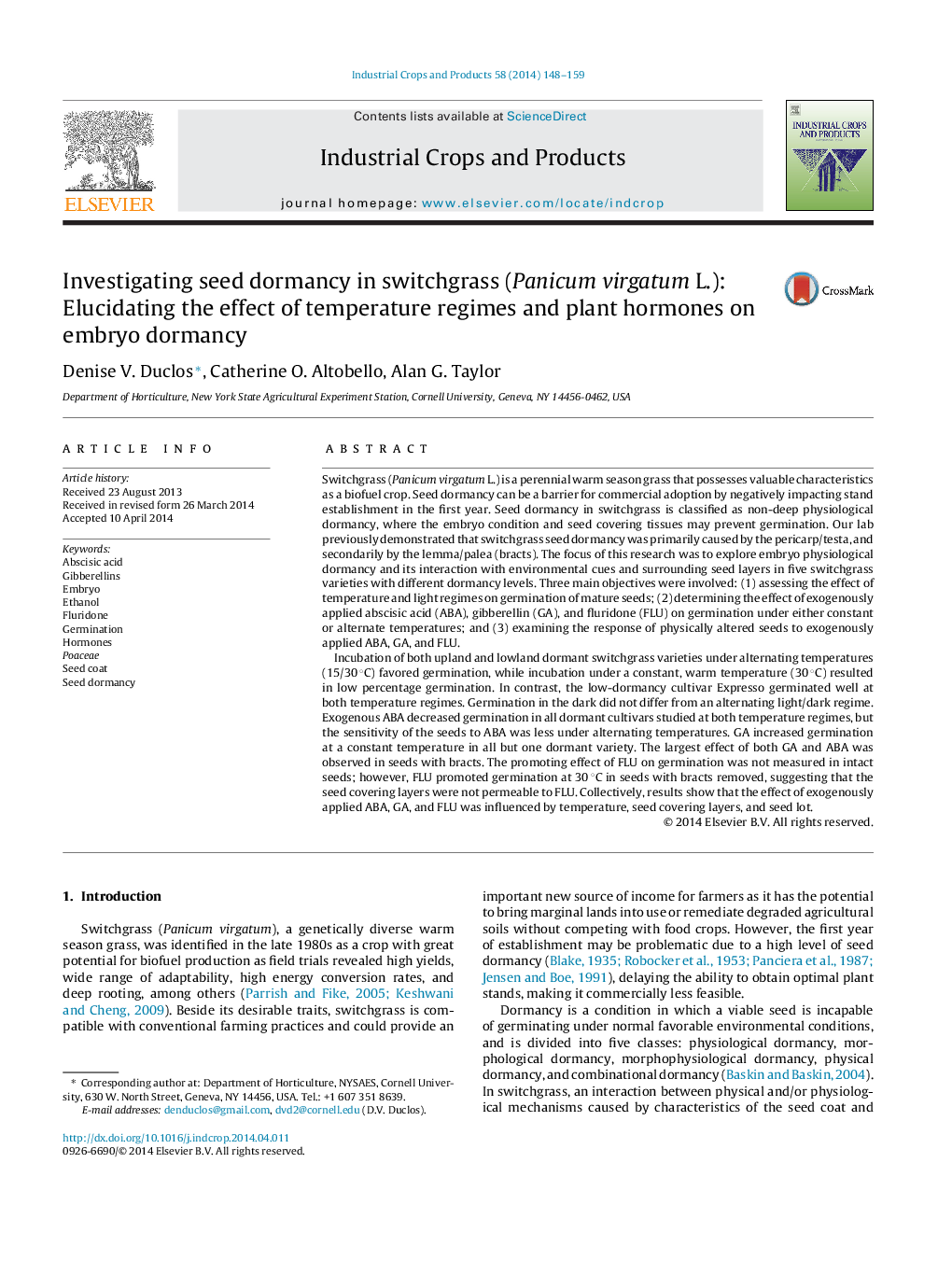| Article ID | Journal | Published Year | Pages | File Type |
|---|---|---|---|---|
| 6376745 | Industrial Crops and Products | 2014 | 12 Pages |
Abstract
Incubation of both upland and lowland dormant switchgrass varieties under alternating temperatures (15/30 °C) favored germination, while incubation under a constant, warm temperature (30 °C) resulted in low percentage germination. In contrast, the low-dormancy cultivar Expresso germinated well at both temperature regimes. Germination in the dark did not differ from an alternating light/dark regime. Exogenous ABA decreased germination in all dormant cultivars studied at both temperature regimes, but the sensitivity of the seeds to ABA was less under alternating temperatures. GA increased germination at a constant temperature in all but one dormant variety. The largest effect of both GA and ABA was observed in seeds with bracts. The promoting effect of FLU on germination was not measured in intact seeds; however, FLU promoted germination at 30 °C in seeds with bracts removed, suggesting that the seed covering layers were not permeable to FLU. Collectively, results show that the effect of exogenously applied ABA, GA, and FLU was influenced by temperature, seed covering layers, and seed lot.
Keywords
Related Topics
Life Sciences
Agricultural and Biological Sciences
Agronomy and Crop Science
Authors
Denise V. Duclos, Catherine O. Altobello, Alan G. Taylor,
